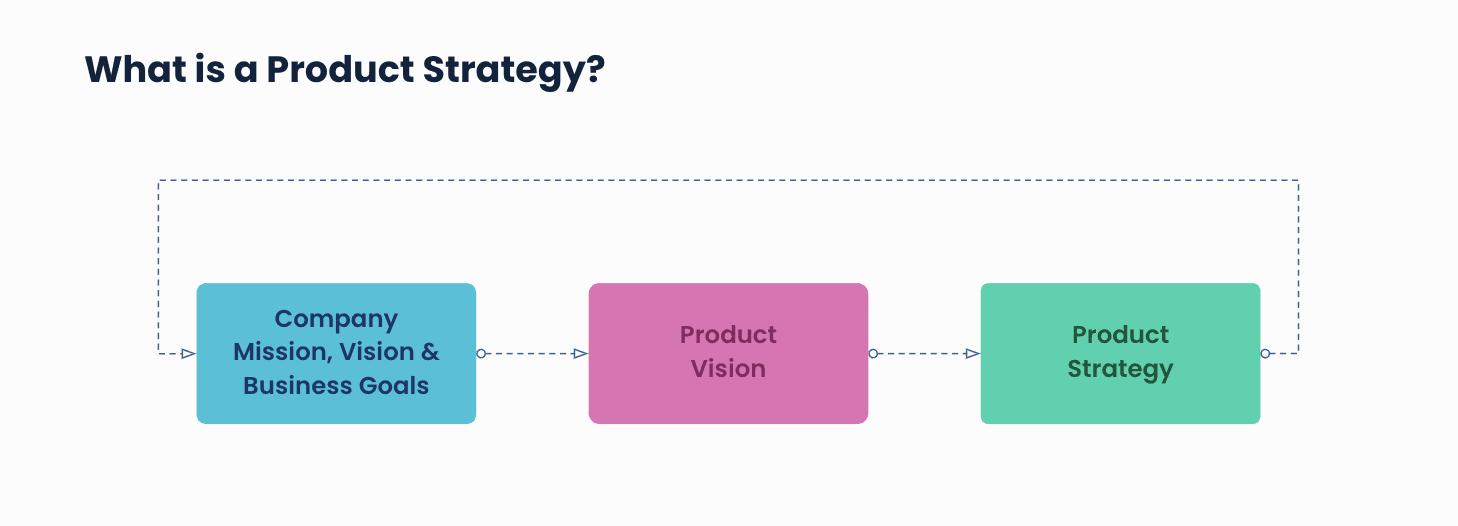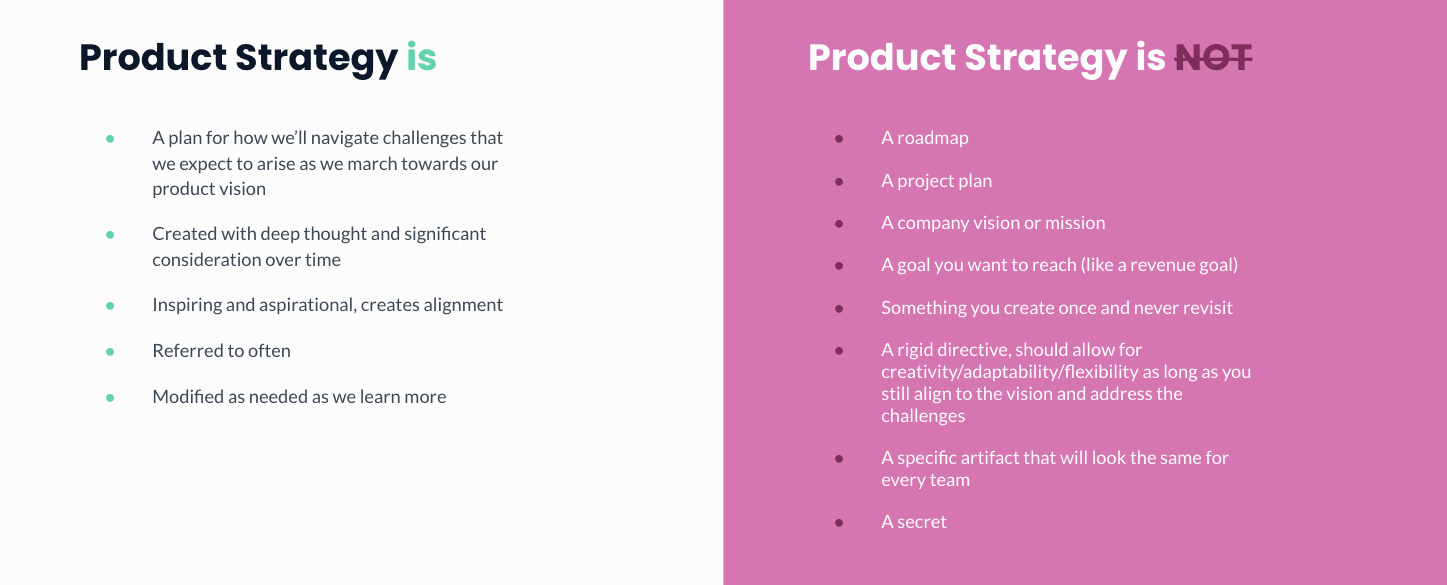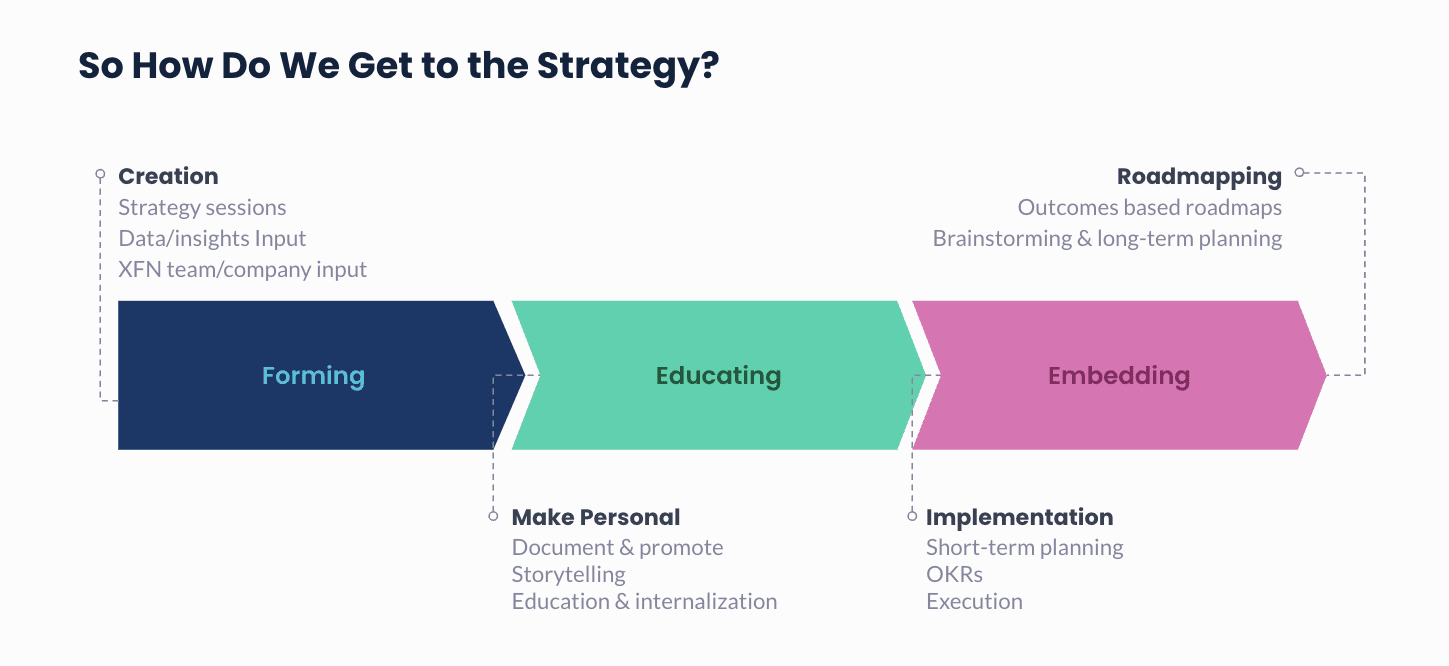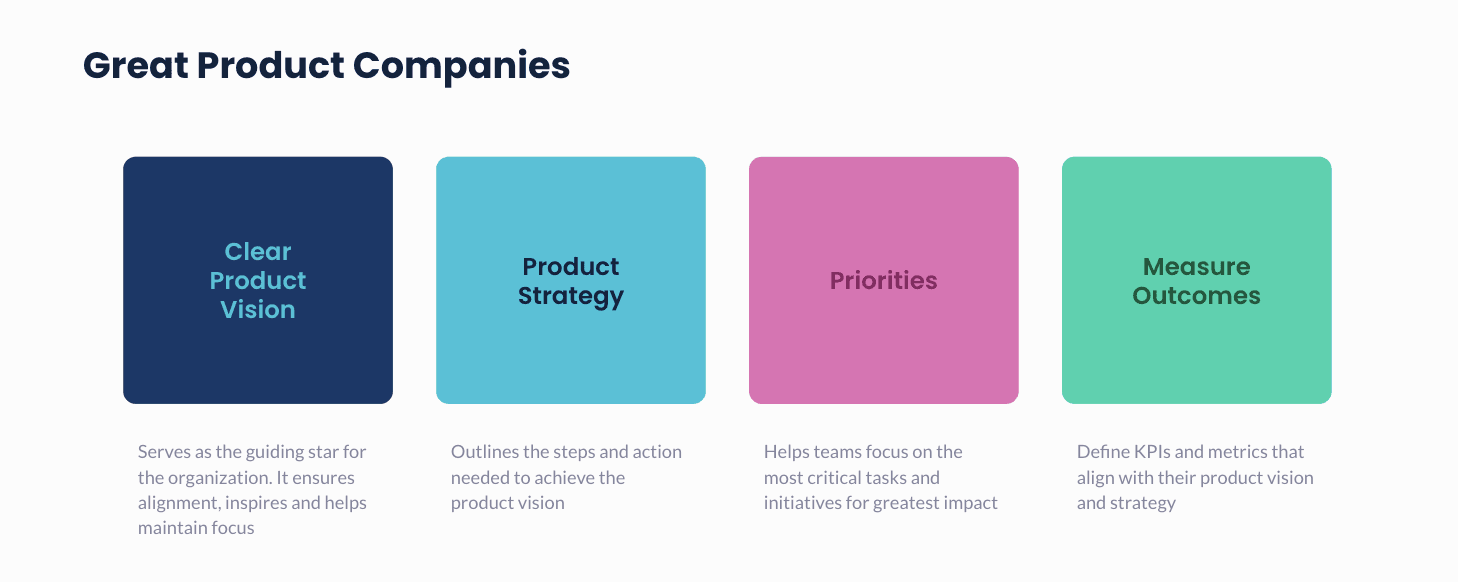Updated: September 11, 2024- 7 min read
To launch a successful product that people actually want to buy, you’ll need a winning product strategy. But how should you go about it? There’s rarely a one-size-fits-all approach in product management, so let’s look at 3 different product strategy frameworks to set you up for success.
What is a product strategy?
Before we dive in, let’s check we’re all on the same page. What actually is a product strategy? In a nutshell, a product strategy is basically the process of defining what you want to achieve, how you plan to get there, and why it will succeed.
To define what you want to achieve, it’s imperative to base your product strategy on your company mission, business goals, and product vision.
And remember, making money is not a company mission. Sure, every company wants to make a profit, but chances are that a successful business will have a higher mission that fulfills a consumer need. In the case of Amazon, their mission is “to be Earth's most customer-centric company.” As a product manager at Amazon, it would be vital to know the company's mission to align product strategy with their North Star.

With that in mind, we can say that a product strategy is a plan for how to navigate challenges that you expect to arise as you move towards the product vision, which in turn aligns with the company mission.
An effective product strategy isn’t the result of a snap decision. It’s created with deep thought and significant consideration over time. It's inspiring and aspirational, creates alignment, and is referred to often. It's also flexible enough to be modified as needed in line with changing needs. What’s more, product strategy shouldn’t be a secret – it should be shared widely with all stakeholders to get buy-in and achieve alignment between cross-functional teams.

Why is product strategy important?
Now that we’re clear on what product strategy is, let’s look at how it contributes to product success.
Focus: Product strategy helps companies focus their efforts on developing and marketing products that meet the needs of the target market. Without a clear product strategy, companies may waste resources developing products that don’t resonate with customers or fail to meet business objectives.
Competitive Advantage: A well-defined product strategy can provide a competitive advantage by helping companies differentiate their products from those of their competitors. By identifying unique value propositions and key differentiators, companies can create products that stand out in the market.
Alignment: Product strategy fosters company-wide alignment on the product's objectives, target audience, and key features. This alignment is essential for effective collaboration and communication across different teams, such as product development, marketing, and sales.
Customer Satisfaction: A customer-centric product strategy ensures that products are developed with the customer in mind. By understanding customer needs, preferences, and pain points, companies can create products that meet their needs and exceed their expectations, leading to greater customer satisfaction.
Resource Allocation: Developing a product strategy enables companies to allocate resources effectively. By identifying key priorities, timelines, and budget requirements, companies can ensure that they have the resources they need to develop and market their products successfully.
Product strategy frameworks for product success
1. Form, Educate, and Embed
One way to develop your product strategy is to think of it in 3 steps: Form, Educate, and Embed (FEE).

Form: The first step is all about gathering information to form your strategy. One way to do this is by collecting key product metrics to draw real and actionable insights that result in data-driven decisions. Another way is to gather input from colleagues. Sourcing information from members of a cross-functional team is a surefire way to gain unique and varied insights into how to make better product decisions. Once you’ve collected your data, you can use it to lead strategy sessions where you start generating ideas and forming a plan.
Educate: The next step is to share your product strategy with others. Once you’ve formed your strategy, it’s time to document and promote it to get buy-in from key stakeholders. This is the time to flex your storytelling muscles to get everyone behind you and internalize the product strategy.
Embed: The last stage is to make your product roadmap, do your short- and long-term planning, set your OKRs to know what success looks like, and finally execute your strategy. Remember, like most things in product, this isn’t a set-it-and-forget-it activity. Monitor your results to check what’s working and what’s not. This will help you to tweak your strategy to maximize your odds of success.
2. Define your product strategy in 6 steps
The second of our product strategy frameworks is a six-step process.
Identify Target Market: Define the target market for your product by understanding who your ideal customers are, their pain points, and their preferences. This helps you create a product that resonates with your customers and meets their needs.
Conduct user data analysis: How are your customers using/not using your product today? What are they successful in? What friction might they be experiencing that may be impacting their/your business outcomes? Pair this usage data with the behavioral/market data to get a full picture of what is going on today and uncover the opportunities ahead.
Conduct Market Research: Conduct thorough market research to understand the competitive landscape, market trends, and customer needs. This research will help you identify opportunities and gaps in the market, as well as potential obstacles and challenges.
Define Product Vision: Define your product vision by creating a clear statement of the product's purpose, target audience, and value proposition. This statement should guide all product development and marketing efforts.
Create Product Roadmap: Develop a product roadmap that outlines key milestones, features, and timelines for product development. This roadmap should align with the product vision and business objectives.
Prioritize Features: Prioritize the product features based on customer needs, market trends, business objectives, complexity, and learning goals. This helps you allocate resources effectively and ensures that the product meets the needs of the target market.
3. Remember the 4 Ps
The last of our product strategy frameworks for success is the four Ps: Product Vision, Product Strategy, Priorities, and Performance. Whenever you craft a product strategy, carefully consider these four key pillars:
Product Vision: Great product companies establish a well-defined product vision that serves as the guiding star for the organization. This vision represents the aspirational goal and purpose of the product, outlining the desired impact on customers and the market. A clear product vision ensures alignment across the organization, inspires team members, and helps maintain focus on the long-term objectives.
Product Strategy: When it comes to the strategy itself, ensure it’s coherent and outlines the steps and actions needed to achieve the product vision. This strategy includes understanding the target market, conducting competitive analysis, and identifying the unique value proposition of the product. It also involves defining the product roadmap, which prioritizes features and initiatives that align with the overall business objectives and customer needs.
Priorities: Great product companies recognize the importance of prioritizing their efforts and resources effectively. They establish a clear set of priorities that help teams focus on the most critical tasks and initiatives that drive the greatest impact. This ensures that the organization remains agile and adaptable in the face of changing market conditions and customer needs while maximizing the return on investment.
Performance indicators: To ensure success and accountability, you’ll need to implement a robust system for measuring outcomes. This will involve defining key performance indicators (KPIs) and other relevant metrics that align with your product vision and strategy. By continuously tracking and analyzing these metrics, you can make data-driven decisions, identify areas for improvement, and assess the overall progress toward the vision and goals. This also allows you to adapt your strategy and priorities as needed to optimize performance and achieve success.

Learn more with Product School
As you’ve seen, there are several complementary product strategy frameworks that can help you to achieve product success. If you want to dive even deeper into the topic of product strategy, don’t miss our product strategy micro-certification. This immersive and self-paced course will equip you with a robust understanding of Product Strategy as you delve into real-world case studies that offer tangible examples of successful product strategies in action. And the best part is, it’s absolutely free. Enroll now to enhance your strategic prowess and advance your product career.
Updated: September 11, 2024





